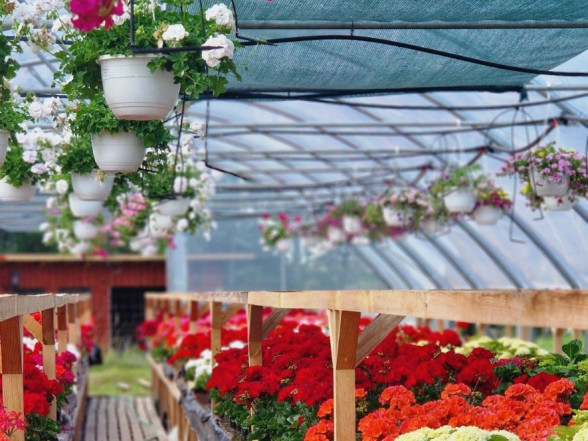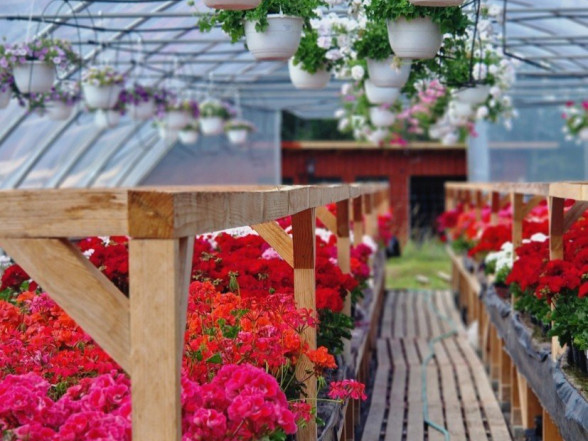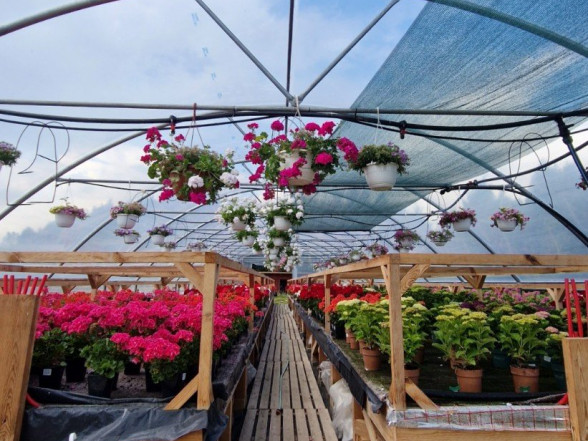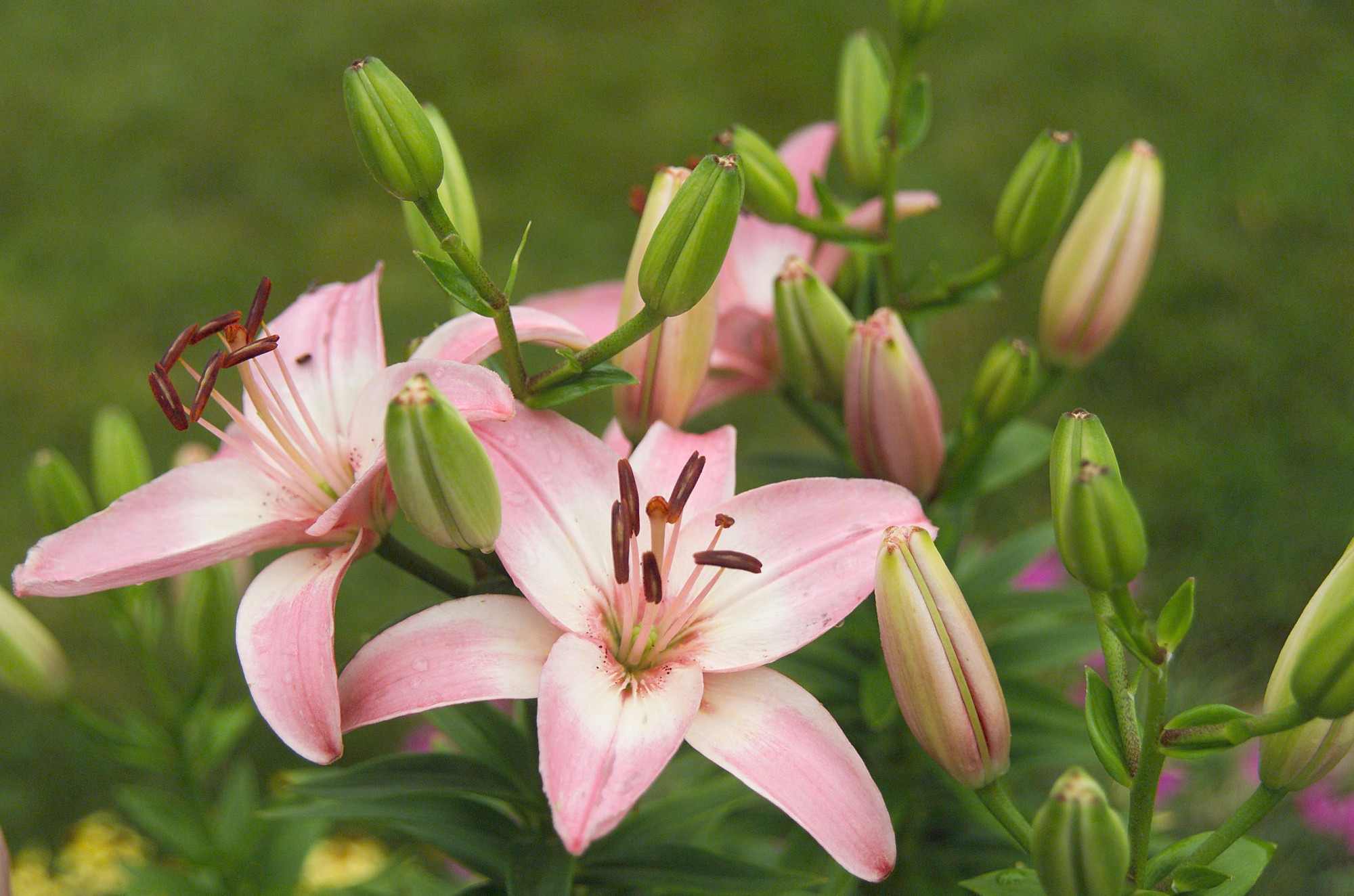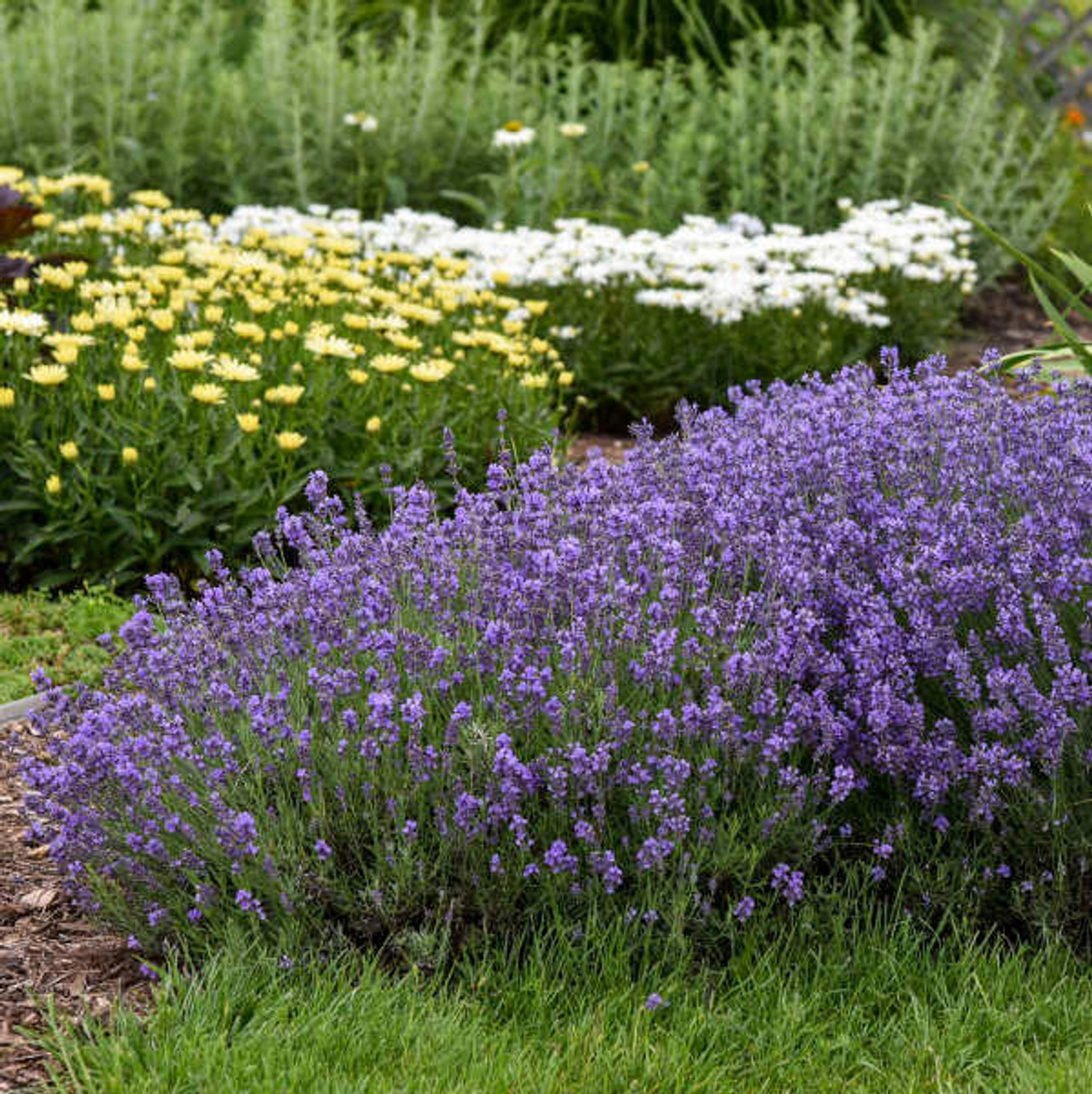Pelargonium cultivation. The best and easiest plant for beginners. The seedlings are inexpensive, and the flower is very hardy. With proper fertilizing and watering, it will bloom abundantly throughout the summer until the first frost.
Pelargoniums are often grown as annual plants in our climate, although in nature, like all plants, they are perennial. If there is a place where to store them over the winter, then they are, of course, perennial and can delight the grower for many years. We have preserved some of our grandmother’s pelargoniums, whose age is currently unknown. Based on feelings, I can say that they are probably several decades old now.
Pot or balcony box size. The size of the pot is chosen based on the size of the fully grown pelargonium. For most plants that are grown on windowsills and balconies, a 3-5 liter pot is sufficient. If there are several pelargoniums or a balcony box is used, this volume is simply multiplied by the number of plants. One simple truth to remember is that the larger the size, the less frequently it will need to be watered. In the first year, while the pelargonium hasn’t fully reached its size, it can also be grown in a smaller pot with a volume of 1.5-2 liters.
Soil. Professional growers choose peat with a pH of 5.9 and add a bit of perlite (about 10%) for larger pots to reduce the frequency of watering. If the plants are intended for sale within the current year, they generally do not add anything. In home conditions – go to the store and ask the seller. If the seller cannot provide any information (as tends to happen these days), then choose soil for flowers and ensure that the pH is within 5.9 +/- 0.5 units
Growing location. One of the few flowers that can tolerate direct sunlight and won’t be bothered by the heat. It can also be placed in partial shade. However, it is not worth planting or keeping it in a very shady spot – the plant will become leggy and bloom much less profusely.
Watering. Water when the soil is dry. To determine this, you should stick your finger into the soil, as it may be dry on the surface but still moist underneath. The most common cause of damage is overwatering pelargoniums. They do not like constant moisture. They can tolerate a day or two with dry soil. The best indicator is the leaves. They begin to wilt and droop. This is already a bit late, but don’t worry – experience comes with time.
Fertilizing. The best option is to fertilize with water and soluble fertilizer every time you water. Plants are like people – they can’t eat for a week or a month in advance, they need food every day. There are many NPK formulas available in stores nowadays (it’s not worth messing with individual elements, and professional growers don’t do it either). The basic principle is: in spring, use a fertilizer with more nitrogen (N). In summer or during flowering and bud formation, use more potassium (K) and phosphorus (P). Every 10 days, feed with calcium nitrate (CaN). In autumn, the nitrogen content should be minimal in the formula.
The next best option is to mix slow-release fertilizers like "Osmocote" or "Multicote" with a 6-month duration into the soil. For certain varieties, the leaves may start to yellow from the outer edges – this is usually observed in bi-colored varieties. This indicates a lack of iron (Fe), which can be addressed by adding iron chelate products to the fertilizer. Always check the recommended concentration on the bag or bottle for all fertilizers and products. Typically, the recommended solution is a 2% concentration when watering the roots. This means 20 grams per 10-liter bucket. You will need kitchen scales (at least initially), usually around a tablespoon. More than this won’t be better. If it rains and you miss a watering, don’t double the dose next time. Use the same dose as before.
Example. In spring, when the plant starts producing new shoots, use 32-10-10 or 18-18-18. Apply this for 2-3 weeks. Every 10 days, use calcium nitrate (CaN), then you can switch to a formula with more potassium and phosphorus, such as 15-30-15 or 6-14-20 (very suitable for autumn when nitrogen should be minimal). Of course, all other additives with micronutrients are beneficial and are often already included in the fertilizer composition. If you are using slow-release fertilizer, then reduce the concentration of water-soluble fertilizer to 1%.
This is just an example – check what is available to you locally and observe your plants. In 2-3 seasons, you will find the most convenient and suitable method for you
Pests. Either because of the peculiar smell of the leaves or some other reason, it has been noticed that if pelargoniums are kept outdoors, they do not have pests.
Aphids have been observed if pelargoniums are kept indoors, especially during the winter/spring period when the plant is producing new leaves. How to deal with them? A folk remedy is vodka (wipe the leaves with a damp glove or cloth) and insect-trapping sticky strips. An interview and demonstration can be viewed at https://www.lsm.lv/raksts/dzive--stils/ikdienai/pret-laputim-un-baltblusinam-jacinas-ar-snabiti.a286019/
Another option – in autumn, when bringing the plant indoors, cut off the infected leaves and wipe them with a damp glove (there may also be larvae on the old leaves – small, white spots, stationary, which can be wiped off with your hand). Repeat this action once a week for 2-3 weeks and monitor if they reappear.
Overwintering. For those who want to keep a special variety or don’t want to spend a lot of money on large pots that were grown in a greenhouse and cost what they cost (9-12 euros), they can keep their pelargoniums indoors or in a cool room. We keep ours in the winter garden, where the temperature in winter is around +7 degrees, while my mother used to keep them on a windowsill. Both options work, though the timing and amount of pruning may vary.
Good luck with everything!
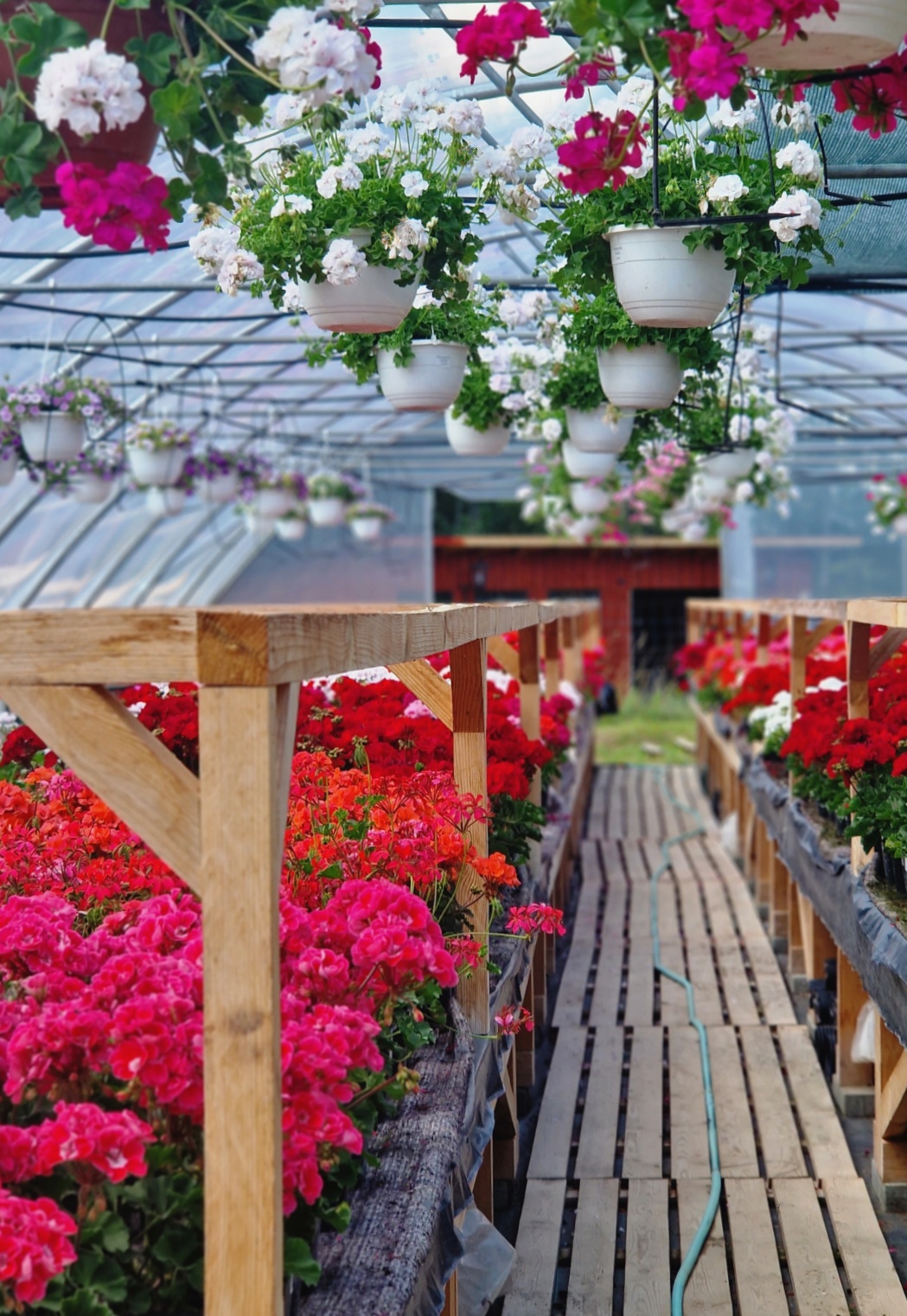
P.S. For those who want to try their hand at pelargonium cultivation or preserve a variety for the next year, they are available here:
Trailing pelargoniums https://plants4you.lv/lv/pelargoniju-stadi/nokarenas-pelargonijas/
Zonal pelargoniums https://plants4you.lv/lv/pelargoniju-stadi/zonalas-pelargonijas/
Semi-trailing pelargoniums https://plants4you.lv/lv/pelargoniju-stadi/pusnokarenas-pelargonijas/
Large-flowered pelargoniums https://plants4you.lv/lv/pelargoniju-stadi/lielziedu-pelargonijas/
Two-colored pelargoniums https://plants4you.lv/lv/e-veikals/pelargonijas/krustotas-pelargonijas/
Fragrant pelargoniums https://plants4you.lv/lv/e-veikals/pelargonijas/smarzigas-pelargonijas/
Interesting facts about pelargoniums:
1. The native home of pelargoniums is southern Africa. Around 250 different species of wild pelargoniums have been recorded. There are about 350 cultivated varieties. There are many more names, but a good number of them are the same variety under different names, or the differences are symbolic.
2. Pelargoniums appeared in Europe in the 16th century, but active breeding and spread among the gardens of the wealthy began in the 18th-19th centuries.
3. Some varieties have an exceptionally high essential oil content. Pelargonium oil is used as a key ingredient in natural sprays intended to repel mosquitoes and other insects. These sprays have been observed to work and smell good.
4. In addition to the traditional flower shape, there are varieties with rose-like, tulip-like forms, as well as star-shaped flowers.
5. Zonale pelargonium means that it has leaves with a distinct zonation – light and dark green. The leaves can also be simply green or dark brown. The leaf shape is very diverse.
6. Pelargoniums are also used in folk medicine – the so-called "ear flower" is the fragrant pelargonium. It is not the flowers that smell (they are small and scentless), but the leaves themselves.
7. Pelargoniums are easy to propagate – placing a cutting in a glass of water will produce roots within 1-2 weeks.
8. When grown in suitable conditions, pelargoniums can easily reach heights of 3-5 meters. The so-called tree-like pelargoniums are not special varieties, but large-growing varieties that, under the right conditions, grow to 50-60 cm in 5-liter pots.
9. Most pelargoniums have been bred specifically for decorating balconies, terraces, and windowsills, where they grow in pots or boxes. They are especially popular in hamging pots. Recently, they have also been seen in flowerbed compositions, where they are grown as annuals, creating a very attractive overall look.
10. A significant advantage of pelargoniums is that they thrive even in direct sunlight, on the southern side, where traditional flower compositions simply wither.

